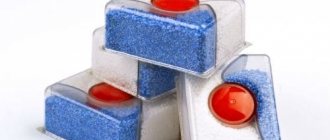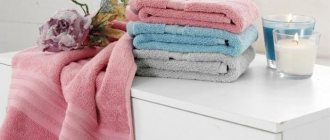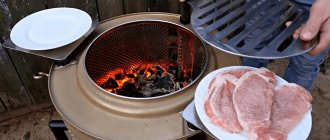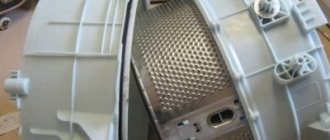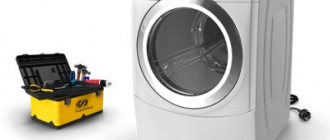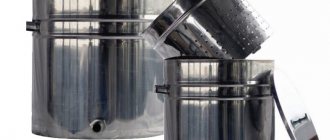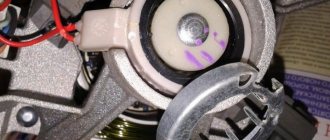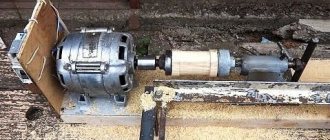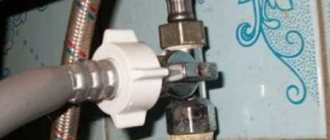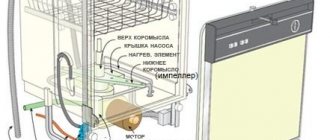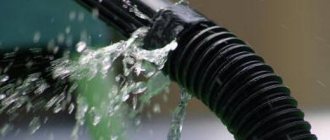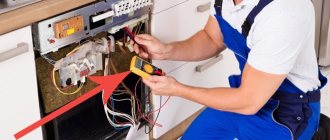Tablets used to wash dishes in a machine cost a lot of money. This is one of the reasons that makes you think about an alternative. The second reason is the chemical composition. The tablets contain substances harmful to health and the entire ecosystem.
Homemade detergents made from inexpensive and harmless ingredients will help solve the problem. How and from what to make dishwasher tablets with your own hands? This is exactly what we will discuss in our publication - here we will provide effective recipes for homemade tablets and consider the intricacies of their manufacture.
Features of the composition
Modern means for processing dishes consist of the following components:
- Surfactants (surfactants). Their main purpose is to foam the powder.
- Acids. Necessary to facilitate the removal of grease and dirt.
- Liquid softener.
- Expensive products contain sodium silicate. This substance helps prevent the development of metal corrosion.
- Flavors.
- Clarifiers.
- Thickeners.
For a long time there have been debates about the effects of these substances on the human body. It has been revealed that they are indeed dangerous when consumed in large quantities. Still, why risk your health and overpay manufacturers if you can make your own detergent from those substances that are on the shelf of every housewife?
What are the dangers of household chemicals?
Today's household chemicals perfectly break down fats and make water softer - all thanks to surfactants. The debate about their effect on the human body does not stop. One thing is clear: there is harm from them and everyone decides for themselves how to deal with it. You can rinse the dishes more thoroughly, or you can completely refuse to use store-bought products.
If you use household chemicals, read their composition. The most dangerous ingredients that may be contained in detergents are:
- chlorine and organochlorine compounds;
- formaldehyde;
- Surfactant
Harmful components cause anemia, allergies, pulmonary tuberculosis, worsen the condition of the skin and hair, provoke atherosclerosis and cancer, and reduce immunity.
Recipe No. 1 powder and soda
Soda is one of the elements responsible for the formation of a living organism. Its use in minimal quantities has a beneficial effect on its functioning.
This chemical component has the property of cleaning surfaces. The fine powder dissolves perfectly in water, does not scratch dishes or damage enamel. Making your own baking soda detergent is quite simple. This requires:
- Dissolve 1 teaspoon of fine soda in 1 glass of water. You need to stir it for 30 seconds. As a result, you should get a cloudy and homogeneous liquid.
- A small amount of hydrogen peroxide should be added to it. 1 - 1.5 teaspoon is enough.
It is recommended to use the natural composition immediately after preparation to avoid sediment. Soda will do a great job of removing burnt marks and greasy deposits. It can be used to process cauldrons, frying pans, pots, as well as small dishes and cutlery.
The resulting composition will be very liquid. When using it to operate a dishwasher, be sure to add 1-2 tablespoons of table salt to it.
Types of dishwashing detergents
How to replace detergent? To summarize, detergents for PMM are represented by three main groups.
Powder detergents
They are the most affordable. If you buy in large packages, then the powder will last for a long time, since one cycle takes an average of 25-30 g, and the price is cheaper.
Important! As disadvantages, you can point out that:
- the powder may scratch the walls of the dishes;
- When you place it in the compartment, the powder may spill out.
Recently, concentrated and low-abrasive powders have appeared; they even come with a dispenser so that you can not miss the amount of powder.
Gel detergents
Gels soften water and do not oxidize metals. They are often released in the form of balls, which are placed in the compartment of the machine. In addition, it is believed that gels are the safest for the “health” of the unit.
Pills
One tablet is used per cycle. They occupy first place in the ranking of detergents. But at the same time, they are the most expensive of all products - when using them, you have to turn on the machine for a full cycle so that they have time to completely dissolve. But despite this, their reviews are the best.
Important! Now there are tablets with dosing strips so that they can be “adjusted” to different quantities of dishes. Tablets are available in single-layer, multi-layer, and the most convenient option is three in one. Three-layer tablet containing detergent, rinse aid and softener.
Those housewives who have chosen the option without rinse aid, but want to see their dishes without streaks and white spots, should acquire liquid rinse aid. It is this that prevents the formation of drops, forming a thin film on the dishes.
Important! Such detergents are completely harmless for the dishwasher and are completely washed off during the rinse cycle. But if you don’t completely trust them or there are allergy sufferers in your family, then experts advise running an additional rinsing program, which is included in every technique from a self-respecting manufacturer.
Recipe No. 2 tablets
The best means for removing food stains are tablets. To create them at home you will need:
- Baby powder “0+” - 8 teaspoons.
- In relation to this amount, you need to add 1.8 tablespoons of soda and 0.2 dishwashing detergent.
Important! Do not add dishwashing detergent in excess of the specified amount. It will foam a lot. This may harm your home appliances.
- The composition can be adjusted independently by adding filtered water to it. As a result, you should get a viscous consistency.
- From the resulting pulp you can create tablets of any shape.
To treat dishes, the product should be placed in a special equipment drawer. It will begin to effectively cope with dirt at temperatures up to 40 degrees.
It is recommended to use baby powder so that the consistency is less aggressive and does not damage the thin enamel.
The resulting dishwasher detergent is an economical option. You can prepare more than 30 tablets of the same type that will completely remove contamination. After completing the processing, you need to thoroughly rinse the dishes with running water.
What does the market offer?
Manufacturers compete in marketing - 7 products in one tablet, a special gel, gradual dissolution. Protection of glass, crystal. Whose imagination works for what?
In the photo: expensive Fairy, but it launders with a bang, the unknown Snowter 5 in 1 is a cheap alternative and between them is a homemade bear-tablet
As a result, a simple bar from an unknown “German” manufacturer costs 9 rubles. Famous ones, with multi-colored elements - from 18 to 30 rubles per piece. The average weight of a dishwasher tablet is 16 grams.
Recipe No. 3 mustard
In the Middle Ages there were no technologies that are available to us now. Scale, grease and other types of contamination were cleaned with mustard powder.
It is recommended to use this natural substance to treat dishes, as it foams well and effectively washes away food residues from it. To prepare this composition you should:
- 100 grams of mustard must be mixed with the same amount of boron.
- Everything must be moved carefully. As a result, you should get a thick consistency similar to sour cream.
- Then, you need to add baking soda or soda ash to the resulting composition.
Folk dishwashing detergent can be used repeatedly. But, you can only store it in a dark and inaccessible place.
Important! The mustard should be mixed thoroughly so that no lumps remain. Otherwise, it may get into the sprinkler nozzle and damage the equipment. In addition, stains may remain on the dishes; you will have to rinse them again.
Homemade dishwasher that speeds up the washing process
The work begins by removing the wooden handles of the sweeping brushes, leaving only the plastic bodies with bristles.
Marks are placed on the side walls with a marker, departing about 15 cm from the top edge. In these places, the plastic is carefully drilled with a screwdriver. The diameter of the holes must match the bolts used. The brush bodies are drilled in the same way. At the assembly stage, the brushes are placed one by one into the cavity of the bucket and bolted. To make them easy to remove and wash, the wing nuts are left on the outside. Now pour warm water with some foamy product inside and start washing the dishes. Upon completion of the process, the water is poured into the sewer, and the device is disassembled into parts and washed with clean water.
Another version of a homemade dishwasher is made on the basis of an old washing machine. Only models with top loading activator type are suitable. Many people have similar household appliances in their dachas or barns. As a last resort, such a unit can be bought secondhand. After thorough washing, it will be ready for use.
But you can’t use the car right away; it needs to be slightly modernized. To prevent contact of the dishes with the rotating activator, you will have to make a special container. It is welded from metal rods or bent from stainless steel mesh. The container should easily fit into the tank of the car and also be removed from there.
Source
Recipe No. 4 soap
The soap has excellent cleansing, whitening and foaming properties. To prepare a detergent with this component you will need:
- Grind the soap through a fine grater. Preferably children's or household items. For one application, 50-60 grams of shavings are enough.
- It must be dissolved in 1 liter of boiling water. You need to pour it in evenly, stirring constantly so that no lumps form.
- The liquid will resemble viscous jelly. You need to add 50 grams of soda to it.
- If desired, you can add 5-6 drops of essential oil. It will create a pleasant smell and add shine.
Next, you need to cool the gel. This effective composition will quickly deal with stains of any complexity. It can also be used for washing manually or automatically.
Facade installation
The front is usually hung on full-size dishwashers. For this purpose, the kit includes an installation kit - brackets, screws, etc.
The facade should be hung only after the PMM has been fully connected and the position of the machine has been finalized. All you need to do is attach the fixing strips to the self-tapping screws and attach them to the facade door. The instructions for the PMM will describe this process in detail.
Recipe No. 5: citric acid
There is another universal recipe for making detergent. To prepare it you need to mix the following ingredients:
- soda – 200 gr.
- borax -150 gr.
- sodium sulfate -500 gr.
- citric acid – 100 gr.
It is necessary to connect all components and move them carefully. This powder can be used to make tablets that can be used to clean kitchen appliances in the dishwasher. You can also dilute it with a small amount of water to make a liquid mixture.
It is preferable to use tablets rather than a liquid mixture. They are less aggressive and will remove plaque more carefully.
Brain powder or how to make dishwasher powder 9.7 times cheaper
Update
A new version of the powder and a more detailed analysis in the second part: DIY powder for the dishwasher: we analyze industrial products and improve the recipe
Now I’ll tell you how to make dishwasher powder from baking soda and washing powder. Same composition, only much cheaper.
There are many areas of our life where our perception is formed exclusively by marketing bullshit. Unfortunately, most people don’t even try to think about what lies at the heart of it all. Very often, the market situation leads to the fact that the cost of a product is 0.5% of its price. The rest is marketing, markups, logistics, packaging and the like. Almost everyone is aware of the concept of selling printer ink at the price of the tears of Himalayan virgins and the insistent recommendations of manufacturers to use only original consumables. For example, quite recently it dawned on me that 1.5 grams of dry matter in a bottle of plant fertilizers cannot cost 200-250 rubles. But this is exactly the amount that can fit in a relatively stable state in the form of a solution. I immediately imagined hectares of fields and trucks carrying tons of powder
. As a result, I switched to packaging 1 kg of Buiskiye complex dry fertilizers. You can prepare a bath of solution.
Today we will create an ultra-cheap dishwasher powder. The decrease in real wages and the rise in price of imported household chemicals forced us to rummage through textbooks, look through a bunch of materials from chemist forums and try to find ways to save on consumables. The cost of the powder has become very noticeable. The results of thoughtful research and experiments were very surprising. For industrial use, chemical technologists most often create individual formulations depending on the water quality and tasks. Why don't we try to figure it all out?
TLDR:
70% baking soda and 30% washing powder instead of detergent. If you are too lazy to bother with soda, then just Biolan powder or its analogues. Soda makes it cheaper. Table salt "Extra" instead of salt.
Types of pollution
What do we need from the powder? Weird question. To wash. Well, it is desirable that it is not highly toxic and does not dissolve dishes along with the dishwasher. The detergent must cope with the main types of contaminants:
- Fat. The main pollutant is all kinds of frying oils, salad dressings, fingerprints, as well as fatty sauces, etc.
- Protein contamination. Less common, but difficult to remove, are eggs, cereals and other similar options.
- Dyes. Tea, coffee, beets and other highly colored things.
- Smell. A chicken that has been left in a container for a couple of weeks can give you quite a thrill.
- Inert mechanical pollutants. Sawdust, stuck pieces of greenery, radioactive dust and all sorts of little things.
- Unknown burnt crap from the party before last. Nothing will help. Don't get your hopes up. Throw away dishes.
Various surfactants (surfactants) cope well with the first type of pollution. These are chemical compounds that, concentrating at the interface between thermodynamic phases, cause a decrease in surface tension. In a simplified way, you can imagine this as enveloping fat particles with surfactant molecules and preventing them from sticking back to the surface.
This class of substances is quite extensive and includes two main groups: ionic (anionic) and nonionic surfactants. The former disintegrate into ions in solution (salts of fatty acids, for example, ordinary liquid soap is potassium salts), the latter do not dissociate (alkyl glycosides and others). Anionic ones, as a rule, clean better, but are more aggressive.
Protein stains are a little more complicated. Traditionally, dishwasher powder includes enzymes that hydrolyze protein into small peptide pieces. Enzymes are capricious, they work in a small range of pH and temperature, since they themselves are proteins. At high washing temperatures (over 60 degrees), almost all of them will be denatured and stop working. An alternative option, more typical for industrial products, is the creation of an alkaline environment. Many people used a pipe cleaner like “Mole” and the like. Contains detergents (surfactants) and alkali (sodium hydroxide). This whole hellish mixture destroys almost any organic matter, including proteins and fats. Proteins are broken down into individual peptides and amino acids. Fats turn into soap: The same reaction underlies one of the ancient methods of producing soap from vegetable and animal fats. The main disadvantage is that it creates a very aggressive environment. Concentrated alkali will just as happily dissolve the skin on your hands. Caution is required in use.
With dyes everything is quite simple. As a rule, to bleach a pigment, it is enough to oxidize it, changing its structure. Most often this is achieved with active oxygen or chlorine. Suffice it to recall hydrogen peroxide and various versions of bleach, which easily discolor tea, coffee, pomegranate juice, and the like. Be sure to be included in both powders for dishwashers and washing machines. For fabric, softer options are used so as not to dissolve the factory pattern on the clothes. The odor is eliminated by these same oxidizing agents, since the “smelling” molecules also react with these components.
Mechanical pollution does not require the use of household chemicals at all. High jet pressure and hot water are sufficient for washing dishes.
Washing powder in the dishwasher
The idea may seem a little strange to you, but automatic washing powder is almost identical to dishwasher powder. In order not to be unfounded, let's look at the typical composition and purpose of each component. For the detailed description I would like to thank avor
from the forum www.chemport.ru. Analysis of the components of two typical representatives, one “eco-friendly”, the second “children’s”.
"Ecover": zeolites, sodium disilicate, C12-18 sodium alkisulfate, sodium carbonate, sodium bicarbonate, sodium sulfate, ethoxylated methyl esters of rapeseed oil fatty acids, sodium polyaspartate, sodium cocoate, cellulose gum, methylcellulose, magnesium sulfate.
“Aistenok”: 5%-15% natural fat-based soap, oxygen bleach, phosphates (in terms of P2O5), less than 5% nonionic surfactants, sodium silicate, polycarboxylates, optical brightener, foam regulator, phosphonates, aromatic additives.
- Zeolites are solid insoluble substances that absorb some contaminants (they can leave fine dust if rinsed poorly) and are inert to the body; they are used in medicine as enterosorbents.
- sodium disilicate (liquid glass) - a thickener, adhesive, granulating agent is obtained on the basis of sand and caustic soda, dangerous only at high pH.
- sodium silicate is the same as sodium disilicate.
- sodium carbonate, sodium bicarbonate - this is soda ash and baking soda used to regulate pH and soften water - toxic only at high pH.
- Sodium C12-18 alkyl sulfate is a synthetic surfactant based on fatty alcohol (the source can be either vegetable or petroleum) and sulfuric acid. Used in shampoos, low or no toxicity.
- ethoxylated methyl esters of fatty acids of rapeseed oil - synthetic nonionic surfactants based on ethylene oxide and methyl esters of rapeseed oil fatty acids, semi-natural product, toxicity see alkyl sulfates.
- Sodium polyaspartate is an expensive additive based on a natural amino acid, serves as a thickener, water softener, and contaminant desorber, and is non-toxic and absorbed by the body like food.
- Sodium cocoate is an analogue of ordinary soap, but not based on animal fatty acids, but on the basis of coconut oil fatty acids.
- Cellulose gum is a derivative of cellulose (wood). The purpose is the same as sodium polyaspartate, low toxicity.
- methylcellulose - similar, but used as a thickener.
- magnesium sulfate. - used in medicine, both for intravenous and oral administration - magnesia. Powders contain an inert filler.
- natural fat-based soaps - regular soap, but with fatty acids of animal origin, similar to sodium cocoate
- oxygen bleach - sodium perborate or percarbonate is similar in properties to peroxide, which girls use to bleach their hair; during washing they decompose and kill microflora; the decomposition products are low toxic (borates) or practically non-toxic (carbonates).
- phosphates (in terms of P2O5) - water softener and pH regulator sodium tripolyphosphate, phosphates are used as food additives and have low toxicity.
- less than 5% nonionic surfactants - compounds similar to ethoxylated esters of rapeseed oil fatty acids, however, products derived from petroleum can also be used as a hydrophobic component (similar to alkyl sulfates)
- polycarboxylates - either carboxymethylcellulose or derivatives of polyacrylic acid (used in diapers, in particular in cosmetic gels) toxicity is low, the purpose is the same as polyaspartates and cellulose gum (the latter may generally be identical)
- optical brightener - a blue-type dye makes white linen shine with white light due to fluorescence, the toxicity is average, but the doses in the powder are 10,000 - 100,000 times less than what is needed to feel a simple malaise from the effect of this dye on the body.
- foam regulator, defoamer - usually silicone-based oil (analogs are used for breast prosthetics) if it is not in the composition, then the powder cannot be used in drum washing machines, the toxicity is extremely low.
- phosphonates - water softeners, low toxicity
- fragrance additives - usually less toxic than women's perfume.
Actually, all of the listed components are non-toxic and have passed all imaginable tests, including tests for washability, teratogenic and oncogenic effects on experimental rats. If you don’t eat it with spoons, there won’t be any health problems. If poorly washed and toxic substances were used in the production of washing powders for clothes, then consumers would already have contact dermatitis from wearing such things. I liked the wording from the same forum, describing the “technological complexity” of producing such powders:
Well, to make a good car, you need a whole science and expensive equipment. We need an army of qualified specialists. And to use household chemicals of this kind, you need a barrel, an oar, market scales, and two guest workers. And a boss who can read, write and count to one hundred.
Now let's compare it with the composition of dishwasher powders. Let's take a completely standard Finish powder.
I was somewhat confused by the beginning “15% or more, but not less than 30%”, which is logically correct, but looks extremely strange. I read it incorrectly) The main components are a surfactant for fats, an oxidizing agent (bleach for stains), polyphosphate - a softener, enzymes - the destruction of proteins. Here is a similar composition of the very common Somat powder:
Non-ionic surfactants, phosphates, phosphonates, soda, silicate, polymers, oxygen-based bleaching agents, TAED, enzymes, corrosion inhibitor, dyes, fragrance, water.
Now let's take washing powder. I tried options with “Eared Nanny” and Biolan.
The same with minor variations. Biolan's composition is absolutely similar:
Phosphates (15% or more but less than 30%), anionic surfactants (5% or more but less than 15%), nonionic surfactants (less than 5%), enzymes, flavoring.
As you can see, there is nothing criminal in the composition. The substances used vary only slightly among different manufacturers. The only “extra” components for a dishwasher are optical brightener. But this fluorescent is present in microdoses and is perfectly washed off during rinsing. In the same “Biolan Automatic” it is not available at all. Of course, there will always be abnormal chemophobes, but let's leave them the right to wash everything with soap nuts and mustard powder. If there are strange individuals who are willing to pay for it, then why not charge them a multiple markup for an “Eco-organic” product? By the way, “Eared Nanny” is pleasant with its faint odor, but is essentially identical in composition to our other powders - Lotus, Max, Regular powder, Sarma. The only difference is in flavors and marketing positioning.
Let's play alchemist
By choosing a minimally smelling and foaming powder for automatic washing machines, you could calm down. The price savings are already very significant. But we will not stop there and will try to radically reduce the cost of the final dishwashing detergent. I immediately apologize for the quality of some of the photos - I took them with my slippers, but I have a normal camera at work right now.
As the base of the product, we will take the well-known and very cheap baking soda. Baking soda itself is sodium bicarbonate - NaHCO3
.
In solution it has a slightly alkaline reaction and has cleaning properties. But it is much more effective to use the product of its thermal decomposition - washing soda, also known as sodium carbonate - Na2CO3
. Sodium carbonate already has a sharply alkaline reaction in solution, about 11 pH. It reacts with fats to form soap, and successfully hydrolyzes proteins. It is very easy to obtain sodium carbonate - just heat it above 60 degrees.
I recommend using a saucepan/pan and heating in the oven for an hour.
As a result, the resulting powder loses about 25% in weight. Be careful when working with sodium carbonate!
The substance can cause burns to mucous membranes, eyes and other body surfaces. Use gloves, do not eat, do not inhale and be careful. Soda is not a terrible poison, but alkaline burns have never brought joy to anyone. Now it remains to combine 70% sodium carbonate and 30% washing powder in order to add a small amount of detergents, bleach and other components. By the way, as a result of dilution, we reduce the total amount of potentially unwashed surfactants.
Preliminary tests
The first thing washing soda has to deal with is grease. The test sample was a frying pan after frying a pork chop.
After the standard cycle, the picture is more than acceptable. The frying pan felt clean to the touch, I didn’t notice any grease contamination.
A particularly difficult test. Protein and fat contamination. Burnt oatmeal with milk. Such contaminants are rarely removed the first time, even by “special” powders. We try it in enhanced mode, without cleaning anything first.
The result is good. There were small traces of this disgrace left, but I don’t think other powders would have washed off better.
We count the savings
It’s a little difficult for me to calculate the exact figure, but let’s try to at least roughly compare. The price of a conventional pack of soda weighing 500 g is 20 rubles. Price per 100 g - 4 rubles. You can find it much cheaper if you buy the bag in bulk, but this is too much. Now the powder. I would advise choosing powders with minimal odor. “Eared nanny” is quite suitable for automatic machines. The price for a 4.5 kilogram package in the first store you come across is 439 rubles. The price for 100 g is approximately 10 rubles. In total, a kilogram of our product will cost 7*4+3*10= 58 rubles.
Now “special” Finish powder is 560 rubles per kg. The difference is about 10 times!
If you take tablets that contain the same thing, only with beautiful granules, then the difference will be completely prohibitive.
Let's try to estimate the scale of savings for the year. Approximately 20 g of powder is consumed per wash. In my family of 4, the dishwasher usually runs twice a day, but let's take 1 run per day as an average. 20*365 = 7300 g of powder per year. This is 4088 rubles for the “special” and 423 rubles for our version.
Special salt
Another classic way to make money is using a special salt for regenerating an ion exchange filter. Of course, you can’t pour rock salt and sand there. But let’s raise GOST R 51574-2000 for “Extra” grade table salt. Mass fraction of NaCl - no less than 99.7%. The rest is minor impurities of calcium and magnesium. Sorry, but according to the classification of the purity of chemical reagents, this is better than “Pure for analysis” - “analytical grade.” This is “Chemically pure” (“reagent grade”) - the highest degree of purity of the reagent. The content of the main component is more than 99%. The only caveat is that you don’t need to take iodized or fluoridated varieties. Do you believe that salt, which is standardized by GOST for purity, is suitable for consumption, but is not clean enough for the dishwasher?
Potential Cons and Problems
Just to be clear, I am not responsible for the performance of your dishwasher or any potential health problems associated with eating, drinking, or otherwise misusing the results of the experiments.
I am only describing my experience and information received in this area. If there are professional chemists among you, I will be glad to listen to your point of view. The only problem I can potentially see is that due to the high alkaline reaction of the solution, particularly delicate painted porcelain, wine glasses or something similar can be damaged. But such things can generally be washed without using detergents. I still recommend that you carefully test everything and weigh it. From the point of view of health problems, I don’t see anything seditious. We use surfactants even in lower concentrations than in special powders. The basis is harmless sodium carbonate, which is part of antacid preparations for the treatment of gastritis. Allergic reactions to components of washing powder? If you wash your clothes with it and everything is fine, then no problems are expected. When washing by hand, you leave many times more residual dishwashing detergent on your plates and cups. And nothing critical happens. In any case, I would like you to consciously understand what exactly you are doing in terms of household chemicals and why.
useful links
It seems to me that the opinion of professional chemical technologists is much more significant than traditional hysterical squirrels on forums dedicated to getting rid of terrible chemistry and a complete transition to “eco”, “bio”, “organic” products made from “natural” ingredients. I hope the links provided will enable many people to reconsider their views and stop suffering from chemophobia.
- Dishwasher detergent
- Using washing powder in the dishwasher
- Chemical composition of safe household chemicals.
- Fantastic washing powder Umvay??
UPD
Guzzle and apakin users offer a cheap option from a local Russian manufacturer.
Sold in Auchan, called Sanit. Approximate price 100 rubles/kg. It is 2 times more expensive than the considered option, but it is designed directly for dishwashers. Photos of the pack
UPD2
The powder turned out to be not very good. Cleans decently, but worse than soda and washing powder. Leaves marks on dishes and is not completely washed off the surface during rinsing. Standard mode. It will probably be possible to dilute it with baking soda until the flush is clear.
UPD3 Genegineer also advised me to pay attention to the large packaging of salt in washers for large regeneration systems. Packaging 25 kg, price around 600 rubles, i.e. around 25 rubles per kilo. Here, for example, is an option from Leroy:
Features of use
In order for the dishes to be clean and fresh after washing, it is necessary not only to properly prepare the product, but also to observe all the necessary measures during this process.
- The mechanism is designed in such a way that the jets hit from bottom to top. Accordingly, the dishes must be placed strictly vertically. Otherwise, streaks or particles of contamination will remain.
- If you use homemade dishwashing gel, it is recommended to wash the dishes on a delicate cycle.
- It only needs to be added to the dispenser. It is strictly forbidden to throw it into the cell.
- Detergent is added only once before starting work. In the future, it will not be needed.
- The exception is salt. It must be placed in a special compartment located at the bottom of the chamber.
- Without fail, the product must be a single consistency. There shouldn't be any lumps in it. Such a seemingly trivial mistake in most cases leads to clogging of important parts of the mechanism, and subsequently to its breakdown.
- After completion of the equipment operation, it is necessary to carefully examine the dishes. If there are deposits or remains of a folk invention on it, then you need to additionally rinse it manually.
- If the product is made in the form of tablets, then you do not need to make them too large, as they may not fit into the compartment.
- You should not use soda in large quantities, as if it is in excess, the liquid may thicken in the compartment.
Important! Wear gloves and a mask when making dishwashing gel. Many components are very volatile and can damage the skin of the hands or mucous membranes.
Equipment care
Dishwasherware, like any other household or kitchen appliance, does not last forever, but with proper care it can last quite a long time. To do this you need:
- Pre-soak very dirty dishes, removing any leftover food.
- Invite a specialist to descale the device.
In order to achieve maximum results during the washing process, you need to take into account that each type of dishes prefers one or another detergent, for example:
- Earthenware, silver and crystal require only special tools purchased in the store. In this case, washing dishes should be carried out at a minimum temperature and as quickly as possible.
- If the dishes have a hand wash sign, then it is not advisable to wash them in a machine.
- Do not wash dishes containing tin, copper or wood.
Advantages
There are five of the most effective proven recipes for folk remedies suitable for processing kitchen utensils. Why is it worth using a folk invention rather than using a gel that is sold in a store? There are several reasons:
- This is a very economical option. The cost of any homemade product does not exceed 100 rubles, and its volume will last for several months.
- If it runs out, then don’t run to the store. You can create a cleaning ingredient at any time.
- The composition can be changed independently, depending on your own preferences.
- This is an excellent option for those housewives who care about their health. She will see for herself what is included in it. You will be sure that there are no chemical additives in it.
How to choose the right one
Pay attention to the composition. Standard dishwasher detergent contains:
- Surfactant complexes that bind dirt and grease and then remove them from the surface. Tensides improve wettability and create a protective layer using the surface tension of H2O. This reduces drying time and saves electricity.
- The harder the tap water, the higher the percentage of detergents it should contain. Anionic sulfates (petroleum distillates) are the cheapest and pose the greatest danger to the human body. But amphoteric and nonionic ones are the least dangerous. The latter are 100% biodegradable.
- Polycarboxylates - protect the internal mechanisms of the unit from oxides and rust.
- Acids (citric, succinic, salicylic and lactic), which neutralize aggressive chemical components.
- Various alcohols and ethers act as defoamers for surfactants, preventing excess foam from stopping the operation of the machine. They are additional degreasers and flavoring agents.
All alkalis in the rinse aid have a whitening effect. This means that colored dishes will fade over time. If you have a lot of similar cutlery, give preference to the minimum dosage of sodium hypochlorite.
Buy powder and mouthwash from the same brand. The manufacturer has already taken care of the optimal composition of working components that will fulfill their purpose 100%.
Flaws
There are several disadvantages to using a homemade liquid consistency.
- It is more convenient to use a purchased product. It is enough to open the cap and pour the required amount of liquid into the specialized compartment. Accordingly, the user does not have to spend his personal time preparing it.
- It is not always possible to invent a high-quality product. An incorrectly created composition may leave residue or impurities may not be washed off well.
- The resulting consistency may not look aesthetically pleasing.
- When using certain ingredients, such as mustard, cutlery often leaves an unpleasant odor when it comes out of the dishwasher.
- The most important disadvantage is the possibility of equipment damage if the composition is not mixed correctly and lumps form in it.
Should you make homemade dish detergent or buy it at the store? There is not and cannot be an exact answer to this question. Each housewife will independently determine what is more convenient for her to use, based on personal preferences, amount of free time and financial situation.
Connection to communications
Before installing the dishwasher in place, it is better to double-check the accessibility of communications and the required length of the hoses and power cord.
Water connection
Most models only connect to cold water, but there are models that can also use hot water. The simplest connection option is through a tee with a tap, designed for connecting PMM and washing machines.
It is installed directly on the water supply pipe with a ¾-inch thread, and the flexible mixer hose is already connected to the tee. Thus, we will have the opportunity to turn off the water supply separately for the PMM. Of course, before work you need to turn off the cold water in the apartment. Also, when installing a tee, do not forget about winding a couple of turns of fum tape onto the thread.
The supply hose to the PMM water intake is screwed on by hand - it has rubber seals, so this force is quite enough. The use of fum tape is completely unnecessary here and can even be harmful.
Connecting the drain to the sewer
The second step is to connect the dishwasher drain hose - it should have a bend at a height of approximately 600-700 mm from the floor, and its end should not be immersed in water to avoid water being sucked back into the PMM. There are two main options here:
The first option is usually preferable, as it is simpler and protects the kitchen from unpleasant odors thanks to the water plug in the sink siphon.
Connection to 220 V network
To connect the dishwasher to the electrical network, you need a separate outlet located in close proximity - the device’s power cord is usually no longer than 1.5 m. It is also necessary to ground the outlet; this should definitely not be neglected in the case of PMM.
